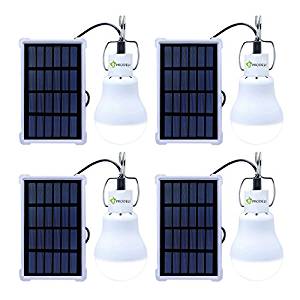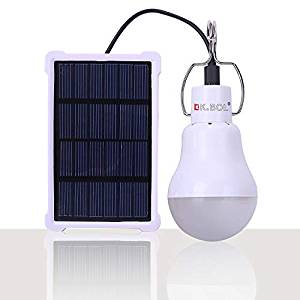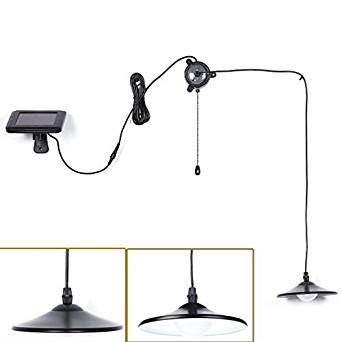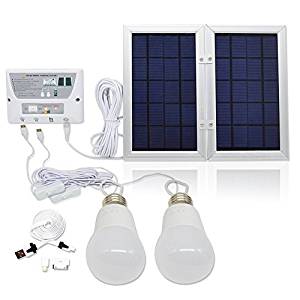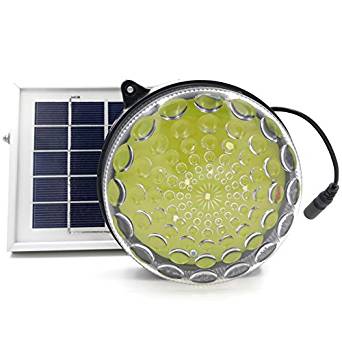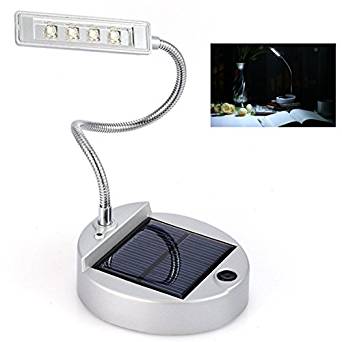The Best Indoor Solar Lights
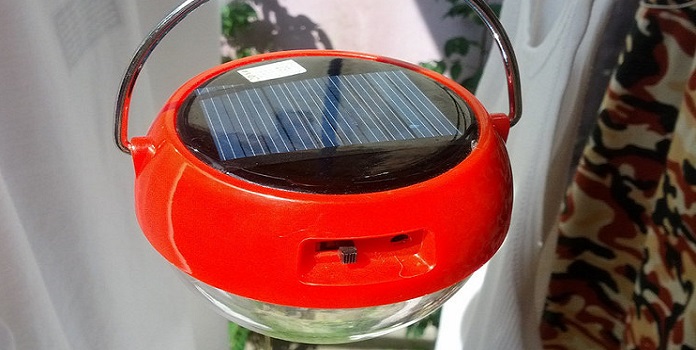
Compare the Best Indoor Solar Lights That You Can Easily Install Yourself
Indoor solar lights are a great option to light up an area otherwise left dark. They’re cheap, easy to install, and spit out light for hours upon end. You’ll never have to buy batteries or fuel and you don’t even need to hire a company to install the solar panels on your roof! They’re perfect for a detached garage or shed, the side of the house, or as emergency light kits.
Today, we’ll figure out what exactly are indoor solar lights, their pros and cons, and offer you a range of bestsellers to get you started.
What’s an Indoor Solar Light?
Before we move forward, let’s answer a very basic question that most of us are probably confused by: what exactly is an indoor solar light?
It’s actually exactly what it sounds like! It’s a pre-made system that includes a small solar panel connected to an LED lightbulb (or two) that has an integrated battery to store the electricity. To use the solar light, just install the solar panel outside or next to the window to charge the battery and your new solar light will go for a few hours to all night, depending on the size of the battery.
Depending on the model, the lights and solar panels can be screwed down permanently or installed temporarily so you take them with you camping as well. Prices range from $10 for a single light/solar panel kit to $60 or more for a more complex system or brighter lights.
Of course, we all have lights preinstalled in our homes, so what’s the point of an indoor solar light? Good question! Homeowners frequently use these to light up anywhere that doesn’t have electricity already run: a garage or shed, chicken coops, porches, camping tents, and even a dark side of the house.
Instead of paying an electrician to run wires all the way to your shed, why not just buy a little kit, mount the solar panel outside (many even comes with an adhesive back) and hang the light? You can’t get easier – or cheaper – than that!
Best Indoor Solar Lights for 2018
Let’s look at a few great options for indoor solar lights. The following five products are all competitively priced, enjoy great reviews, and are available on Amazon. Below we highlight we we chose each product and call out any special features that make it especially worthy of your consideration.
Best Indoor Solar Overall: PRODELI Solar Bulb
Pros: Good brightness, Low price
Cons: Bluish-white light common among lower-end LEDs
The PRODELI Solar Bulb is a simple device, but well worth taking a look at it. It’s really just an LED bulb with a small integrated battery, connected to a solar panel, with an on/off switch on top of the light bulb.
At 150 lumens, it’s produces more than enough light to brighten up a room or garage and with a 1,600 mAh (milliamp-hour) battery, should last for about 8 hours once fully charged. You can charge the light via the included solar panel or via USB input if the sun’s not shining.
PRODELI notes the color temperature of their Solar Bulb is around 6,000 to 6,500 Kelvin, so expect a bluish-white light, very common among cheaper LED lights like this. If this doesn’t bother you, you should enjoy this product. However, if you’re looking for a warmer light more similar to a traditional incandescent, you’ll need to look elsewhere.
This solar light enjoys overall great reviews from customers, with many specifically calling out the brightness of the light for praise. Buyers report using the light in sheds, camping, and even chicken coops. Many note that the solar panel is strong enough to withstand the outdoor elements and requires about 5-8 hours to be fully charged.
The lamp includes a hanging hook and is fully mobile. The cord connecting the solar panel to the light is more than 11 feet long, so you have a lot of options for installation. And weighing in at less than 2 ounces, it is the perfect light to take down quickly and throw in a backpack for a weekend camping trip.
Bottom Line: The PRODELI Solar Bulb is a low-cost, yet very bright solar light that enjoys great reviews. If you’re looking for simple, it’s just about perfect.
Cheapest: KK BOLL Solar Lamp
Pros: Low-price, good value
Cons: Dimmer than others lamps at 130 lumens, bluish-white color temperature
If you’re looking to save some money, take a look at KK.BOLL’s solar lamp. It’s very similar to the PRODELI product above, but a little easier on the pocketbook (though to be honest, both are pretty good deals!)
The KK.BOLL enjoys 130 lumens and a smaller 800 mAh battery to shave off a few bucks. With this smaller battery, the light lasts about 4 to 5 hours, perfect for popping into the garage or shed to grab something at night or to bring on a camping trip.
It includes a hook at the top to easily hang the light up and, again like the PRODELI, includes an 11.5 ft cord so you have the freedom to place both the solar panel and light in the most advantageous spots. The light can be charged via the included panel or USB input (cord not included).
With the KK.BOLL, you get a bluish-white color from the lamp, as its rated at 6,000 to 6,500 on the Kelvin scale. At this low-price point though, customers don’t seem to mind too much. It would probably look a little harsh in your living room or den, but in the garage or shed should provide nice, clear light that you can work by.
Despite the low cost, customers report good performance and decent brightness, though some complained the solar panel was a bit flimsy.
Bottom Line: If you want to save money and only need to use your light sporadically throughout the night, KK.BOLL’s Solar Lamp is a good option.
Best Looks: Kyson Solar Powered LED Shed Light
Pros: Nice farmhouse style, includes remote control
Cons: Not very bright, more expensive than the lights above
The two solar lights above are pretty basic, just a solar panel and lamp connected by a wire. If you’re looking for something a bit more fancy, check out Kyson’s Solar Powered Shed Light. The lamp is integrated into a hanging fixture that attaches to the ceiling, adding a nice ‘farmhouse’ look to the otherwise drab world of basic solar lights.
The light can be turned on via a pull cord on the ceiling base or via the included remote control, a nice addition that makes day-to-day use much easier than with the lamps above.
With all this though, you’re looking at a higher price tag than the lamps above – be prepared to spend around 3x more for this one.
Since the light must be attached to the ceiling to hang down, this is a more permanent option that the solar lights above, so it’s best for applications where you’ll install it in a single location for long-term use.
Of all the lights so far, the Kyson suffers from the smallest battery, at 400 mAh. However, Kyson notes the light lasts between 8 and 10 hours – longer than either of the lights above. They unfortunately don’t publish the lumens or color temperature of their Shed Light, but with this info we can reasonably assume that the light isn’t too bright and indeed, many customers note it’s not as bright as they’d like, so keep that in mind.
Beyond the brightness, customers generally like the Kyson light, appreciating the remote control and how easy it is to install.
Bottom Line: The Kyson light is perfect for permanent installation in a small room or shed. If you’ve got a bigger space to illuminate though, you’ll want to look elsewhere.
Best Emergency Light Kit: HKYH Solar Mobile Light System
Pros: Includes 2 lamps and a USB output to charge phones
Cons: Most expensive option on our list, lights don’t work when battery is charging.
If you’re building out your emergency preparedness kit, take a look at HKYH’s Solar Mobile Light System. While it’s more expensive than a simple light, it comes with quite a bit more functionality too!
First off, it includes 2 lamps, each with their own 16 foot cord and on/off switch. While HKYH doesn’t publish the lumens of the light, they do note that each is 2 watts. While 2 watts isn’t too bright, it’s equivalent to an 11 watt incandescent bulb, so more than enough to light up your life in an emergency.
At 8,000 mAh of battery capacity, this kit has a much bigger battery than any of the lamps above, which come in between 400 and 1,600 mAh. With this battery, you’re able to use a single light for 12 hours, or both simultaneously for 6 hours.
On top of the two lights, you’re also able to charge your smartphone with this kit – a feature no other solar light includes and a real benefit for emergency situations. On a full charge, this kit can recharge your phone 2 to 3 times before needing to recharge itself. The kit even includes the USB wire to plug your phone in, with adapters for common Android and Apple devices.
You’ll find the USB outlet on the controller box, the ‘hub’ that connects the solar panel to the lights. The controller box also includes a simple light to let you know when the battery is close to empty (flickering red light), close to full (green), or somewhere in between (red light on the lower end, orange on the higher end).
Buyers love the convenience of the USB port and report that, despite the 2 watt lights giving off a smaller amount of light, the system works well. The only consistent complaint for the HKYH kit – and this is certainly an annoying complaint – is that the lights don’t turn on if the batteries are still charging via the solar panel. Keep this in mind if you’re looking to illuminate a perpetually dark basement. If so, this might not be the kit for you.
Bottom Line: A great kit for emergency situations, as the USB outlet allows you to charge your phone via solar. However, it costs quite a bit more than other options on our list, so if you’ll have another way to charge your phone, take a look elsewhere.
Best Shed Light: ROXY-G2 Solar Light
Pros: Large battery, photosensor for auto-on, 3 brightness levels
Cons: More expensive than lights of similar brightness
The ROXY-G2 Solar Light is another great option if you’re looking to permanently install a solar light in your shed. It’s more expensive than lights with similar lumens, but you also get a few extra treats along with it.
With a photosensor integrated into the light, it will automatically turn on when it gets dark, making carrying things to the shed or finding what you need a breeze. At 150 lumens of brightness, it’s about as bright as others on our list, but it also comes with 3 different brightness settings if you want to dim the light down a bit.
The lens is also textured to enhance the light’s projection, making it appear brighter. Roxy-G2 doesn’t note the color temperature, but it appears to be bluish-white like the others included here.
The included battery stores 2,400 mAh of electricity, much more capacity than most of the lights above, and users note it easily lasts all night long on the lowest brightness setting.
The solar panel is also one of the sturdiest panels included with any solar light kit. It’s rigid, with a glass-front and aluminum frame. For its small size, this thing is a tank. On top of that, the wire connecting the solar panel to the light is a very-long 15 feet long, allowing you to place the panel and light in the perfect place.
Ten hours of sun exposure will fully charge this light, which weighs in at just over one pound. It works great for both indoor and outdoor use, though the manufacturer notes you have to install with the on-off button protected from direct rain.
The lamp comes with a sensor to automatically turn on in darkness and turn off in daylight. This makes an ideal product for a garage, shed, porch, or balcony. If you don’t like the automatic sensors, there’s also an option to turn it off to keep it charged for emergency situations.
This lamp has lots of customers posting rave reviews on Amazon. Users love the brightness and auto-on function. It’s worth noting that one user complained about the textured light cover, saying it cast a distracting light pattern on the ground. This could be an issue for you if that sounds annoying.
Bottom Line: With a photosensor to automatically turn on, this is a great option if you’re looking for a bright solar light for security or around the house.
Best Solar Reading Lamp: Anpress Gooseneck Lamp
Pros: Charges quickly, good brightness
Cons: Whitish-blue light
So far we’ve looked at lights designed to illuminate a large area like a room or porch, but let’s switch focuses a bit and look at this flexible gooseneck style solar-powered table lamp from Anpress. A small light designed to light up a small area, it’s an eco-friendly addition to any study corner or table. Some users even report it’s the perfect camping light, as it’s small, light, and easy to maneuver to illuminate exactly what you need.
Users report it’s bright enough to easily read under and has decent range. While Anpress doesn’t provide the color temperature, reviewers note it casts a whitish-blue light similar to the others on our list.
The solar panel is permanently attached to the base of the light, which needs 12 hours of sun exposure to become fully charged. It can also be charged in under 4 hours by USB as an alternative. Both methods offer up to 8 hours of steady light. It weighs in at just 6 ounces and has 4 LED bulbs.
Whether you are staying indoors and need extra lighting or enjoying the after-hours outside, this is a well-reviewed, portable solar light with a touch of elegance.
This desk lamp enjoys good reviews, with customers calling out the brightness and quick charge. However, a couple noted they’ve had a hard time with the switch, which can be a bit finicky. Most users, however, don’t report any problems with it.
Bottom Line: The Anpress solar-powered reading light is extremely portable and provides good illumination, all for about the same price as a ‘conventional’ gooseneck light.
Factors to Consider When Buying Indoor Solar Lights
If you’re looking at indoor solar lights, take a minute to read up on what factors to consider. It’ll help you have a much better experience down the road!
Active Time
Active time, or how long the battery will last before needing to be recharged, depends on both the size of the battery and the brightness of the light. Active time ranges from a few hours to 12 or more. As you’ve seen above, each light is different.
If you need your solar light just a few minutes a day while you rummage through the garage, any of the above will do fine. But if you like to tinker for hour-upon-hour into the night, you’ll want to make sure your light’s battery is long enough to handle this. Typically, the manufacturer will note how long the battery lasts, but search through the reviews to see what real users say – occasionally it can be hours less than what the manufacturer claims.
Lumens
Lumens is a measure of how bright the light is. Lumens can range from from 1 to 10 for ambient lighting (like decorative sidewalk lights) all the way to 1500 or higher for flood or security lights. Most of the lights above are 150 lumens, about the brightness of a high-quality flashlight or headlamp.
It’s really a gamble whether the manufacturer publishes the lumens of their solar lights. Some do, some don’t. If they don’t, just jump into the comments to see what people say. Informed users will oftentimes estimate the lumen count and in the least, you can get some anecdotal evidence on whether the light is bright enough or not.
Color Temperature
In the past, few of us really knew about color temperature, but with the advent of LEDs and all their varying shades, color temperature is becoming a much more commonly used description. Color temperature is measured in Kelvins, and denotes the color quality of a light, with orange on the lower end and sky blue on the higher end.
On the extreme low end, the warm orange of a match flame comes in around 1700 Kelvins. On the higher side, 15,000 Kelvins is a clear blue sky. The cheaper LEDs like in the lights above typically fall around 6,000 to 6,500 Kelvins, a clear whitish-blue similar to daylight.
If you want something closer to a warm incandescent bulb, look for around 2,700 to 3,000 Kelvins. Solar lights with a warm white glow can be harder to find, and they’re often a little more expensive than those with bluish-white light.
Benefits and Drawbacks of Indoor Solar Lights
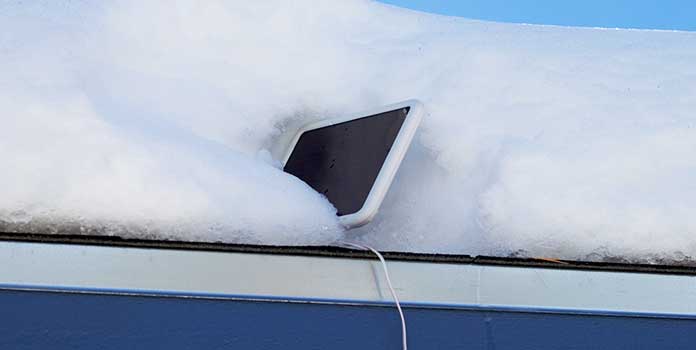

Before we wrap up this post, let’s take a look at a few of the positive and negative aspects of solar lights.
Easier than running electricity
Running electricity to a shed, garage, or porch that isn’t already wired for lighting is expensive and time-consuming. Depending on the complexity, you might even need to hire an electrician to do the job, adding even greater expense. Solar lights though are cheap and easy to install. Just buy the kit, hang the light where you want, and run the wiring for the solar panel outside.
Environmentally friendly
With 30% coming from coal and 34% coming from natural gas, replacing even your little LED lightbulb in our example above with a solar equivalent saves about 12 pounds of CO2 each year, depending on your state’s exact generation mix.
Shifting even some of your electricity generation to a cleaner source will lower your personal impact on the environment and help to drive down the prices of similar eco-friendly products such as solar lanterns. Supporting green technology with your wallet can make a difference in more ways than one!
Great for emergency situations
Unlike our normal house lights, solar lights don’t need the utility or grid to work. As long as you have sunlight, your solar light will work! This can come in very handy in emergency situations, like hurricanes or tornadoes. You certainly don’t want to use it in this manner, but it’s critical to have that backup when you do need it.
Hard to scale
These solar lights are great, but there is one drawback. If you ever decide you want to add a few new lights, you’ll need to buy an entire set-up again. These indoor solar light kits simply aren’t very scalable.
The solar panels are sized to provide just enough power for the included light. If you have a large space to brighten up, you’ll need several kits, which quickly becomes overly complicated. In this situation, instead of buying 5 kits, it’s probably better to just buy a larger solar panel and battery storage, then connect multiple lights to that system.
With that being said, no one is really using these lights to light up their entire home. If you’re just looking to brighten up a small shed, these kits are absolutely perfect. They’re cheap, easy to install, and provide good lighting with the LEDs.
If you’re interested in taking other steps toward solar
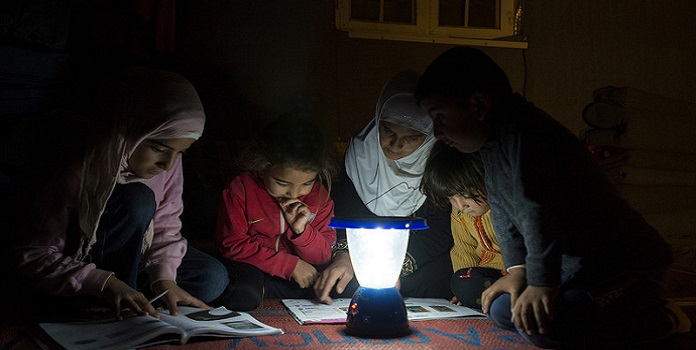

Now that you have a quick understanding of indoor solar lights and some options to choose from, why not branch out a bit more? Start with indoor solar lights and see how easily the sun’s energy can power your most basic needs. Want to use some solar lights outside your house as well? Check out our post on the best solar lights for outdoor use.
If you’re ready to make an even bigger solar commitment, talk to some installers and get quotes to see how much more you can save!
Photo Credits under Public Domain via Flickr – 1, and CC License via Flickr- 2, 3.

